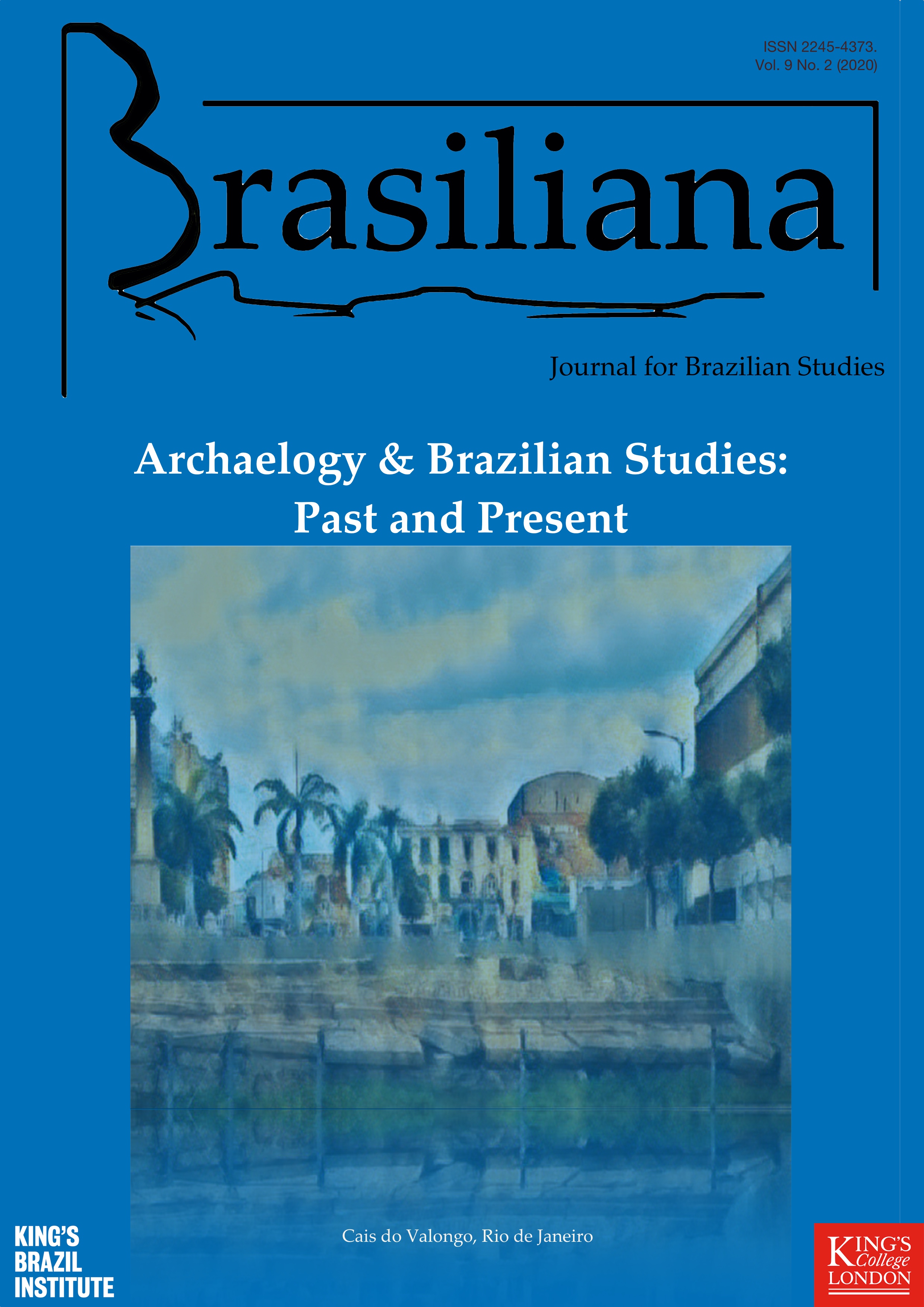The Black Body in Donald Pierson’s Thesis “Negroes in Brazil”
Main Article Content
Abstract
This article aims to present the way the black body is approached in Donald Pierson’s (1900-1995) doctoral thesis. The question to be investigated is: how does one of the first studies on racial issues carried out in Brazil treat the black body? The theoretical framework was defined by authors from the social sciences. The thesis was considered as a historical document. A content analysis was made based on the following codes: the work’s physical structure, notes on the second and the first introductions, and approaches about the body. The results suggest that the black body did not properly qualify as an object of study, but it reveals an element that identifies both biological aspects and the movement of black bodies. It is concluded that resuming the investigation initiated by Pierson about blacks in Bahia is relevant because it allows the understanding of black body markers in the Brazilian context.
Article Details
![]()
Articles published in Brasiliana are licensed under a Creative Commons Attribution-NonCommercial-NoDerivs 3.0 Unported License.
When publishing open access, the author signs an author publishing agreement in which they retain copyright and give Brasiliana the right to publish the article. Our Open Access publications are distributed under the terms of the Creative Commons Attribution 4.0 International License, which permits unrestricted use, distribution, and reproduction in any medium, provided the original work is properly cited.
References
BASTIDE, Roger. (1996 [1941]) Psychanalyse du Cafuné. Paris: Éditions Bastidiana.
BAUER, Martin. (2004) Análise de conteúdo clássica: uma revisão. In. BAUER, Martin e GASKELL, George. Pesquisa qualitativa com texto, imagem e som. 3ª. ed. Petrópolis: Editora Vozes.
BECKER, Howard. (1996) A escola de Chicago. Conferência. Mana, v. 2, n. 2, oct.
CASCUDO, Câmara. (1924) História que o tempo leva. São Paulo: Editora Monteiro Lobato.
CELLARD, André. (2008) A análise documental. In. POUPART, Jean et al. A pesquisa qualitativa. Enfoques epistemológicos e metodológicos. Petrópolis: Editora Vozes.
CORRÊA, Marisa. (1988) Traficantes do excêntrico: os antropólogos no Brasil dos anos 30 aos anos 60. Revista Brasileira de Ciências Sociais, v. 3, n. 6, 79-98.
FERNANDES, Florestan. (1978) Ensaios. A integração do negro na sociedade de classes. São Paulo: Ática.
FREYRE, Gilberto. (2013 [1933]) Casa grande & Senzala. São Paulo: Global.
LE BRETON, David. (1990) Anthropologie du corps et modernité. Paris: Quadrige.
LE BRETON, David. (2013) Antropologia da dor. São Paulo: Unifesp.
MARTINS, Carlos B. (2013) O legado do departamento de sociologia de Chicago (1920-1930) na constituição do interacionismo simbólico. Revista Sociedade e Estado, v. 28, s/n, p. 217-239, mai./ago.
MAUSS, Marcel. (2004) Sociologia e Antropologia. São Paulo: Cosac & Naify.
OLIVEIRA, Lúcia Lippi de. (1987) Donald Pierson e a sociologia no Brasil. BIB. s/v, n. 23, p. 35-48, out.
OLIVEIRA, Nemuel Silva e MAIO, Marcos Chor. (2012) Ciências Sociais e saúde no ciclo de pesquisas no Vale do são Francisco (1950-1960). Physis Revista de Saúde Coletiva, v. 22, n. 2, p. 733-753.
OZAWA-DE SILVA, Chikako. (2002) Beyond the Body/Mind? Japanese Contemporary Thinkers on Alternative Sociologies of the Body. Body & Society, v. 8 (2), p. 21-38.
PARK, Robert E. (1992 [1915]) “The city: suggestions for the investigation of human behavior in the city environment”. American Journal of Sociology, v. 20, n. 5.
PIERSON, Donald. (1951 [1949]) Cruz das Almas. A brazilian village. Washington: Washington Smithsonian Institution.
PIERSON, Donald. (1967 [1942]) Negroes in Brazil: a study of race contact at Bahia Chicago. Chicago: University of Chicago Press.
RAUSHENBUSH, Winifred. (1979) Robert E. Park: biography of a sociologist. Chapel Hill: Univesity of North Carolina Press.
RODRIGUES, Nina. (1988 [1932]) Os africanos no Brasil. Brasília: Editora UnB.
SILVA, Isabela Oliveira Pereira da. (2012) De Chicago a São Paulo: Donald Pierson no mapa das ciências sociais (1930-1950). Unpublished PhD thesis, Universidade de São Paulo.
SHILLING, Chris. (2007) Sociology and the body: classical traditions and new agendas. Sociological Review. Malden / Oxford: Blackwell Publishing, US / Oxford, UK, v. 55, issue: 1_suppl, page(s): 1-18, Issue published: May 1.
VILLANOSE, Linda. (2019) ‘Myths about physical racial differences were used to justify slavery – and are still believed by doctors today’. The New York Times, August 14.

